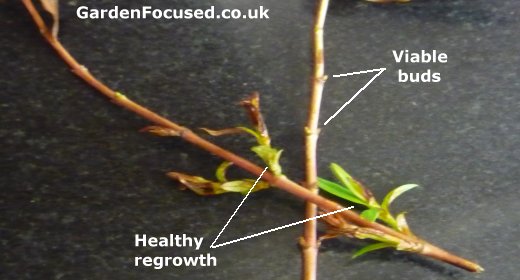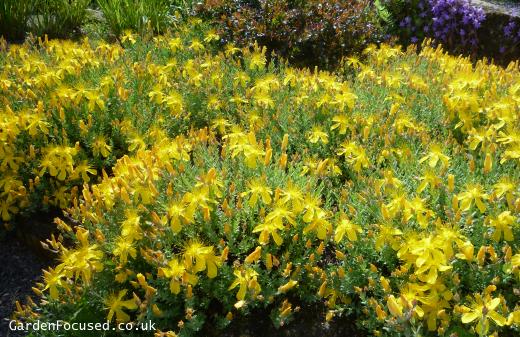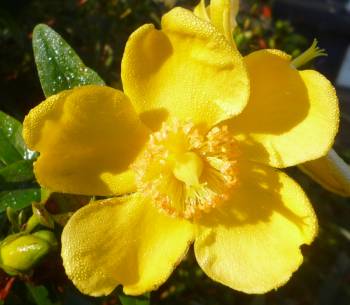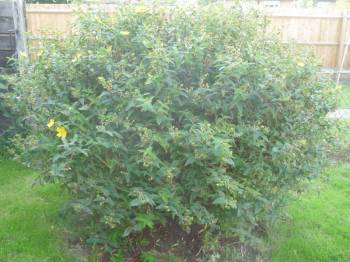Expert Advice on Growing Hypericum
Article by David Marks
Hypericum is a group of about 400 plants but only a few of them are commonlygrown in the UK. Hypericum Hidcote is by the most common of the group producingmasses of medium sized yellow flowers in July to August. It is evergreen in mostwinters and forms an attractive dome shaped shrub which is extremely easy tocare for.
The origins of Hypericum (also known as St John’s Wort) are not known because it now so common in almostall parts of the world. In some parts they are considered as weeds.
Use the checklist below to decide if Hypericum Hidcote is the correct plant for you and your garden:
- They grow to a maximum height of 1.5m / 5ft and a slightly largerspread.
- The green leaves are normally evergreen although in hard wintersthey can be dropped for a couple of months.
- In July they produce large numbers of medium sized yellow flowerswhich last until mid August. A second flush often occurs in late Augustto early September but it rarely amounts to much.
- They grow best in partial shade and but tolerate full shade and fullsun well.
- They grow well in almost all soil types but avoid highly acidic oralkaline ones.
- Established plants require no attention other than an annual pruneto shape. This can be done with a hedge trimmer or a pair of secateurs.
- They are hardy down to -12°C so should survive well in winter for almostallareas of the UK.
- They can be grown in containers but this not their idealenvironment.
- Some parts of the plant can cause problems if eaten. Some people usethem for combatting depression but take medical advice before doing so.
- No specialist knowledge is required to grow them and they are rarelyaffected by pests or diseases.
- One word of warning – an established hypericum is almost impossible to kill without taking extreme measures. You can cut it down to below ground level and it will still grow again from the roots. So, when you plant one, be sure you want it there for a very long time.
WHEN AND HOW TO PLANT HYPERICUM HIDCOTE
Follow the steps below to ensure your Hypericum ‘Hidcote’ is planted correctly:
- Hypericum can be planted all year long if the soil is not frozen and youcan water well when conditions are dry. Mid March to April and midSeptember to October are the best times to plant.
- Choose a position in partial shade for best results but they truly areadaptable shrubs for shade and full sun. They can be planted in soil conditionsexcept extremely acidic or alkaline conditions.
- This is a fast growing shrub which can grow about 40cm in height and widtheach year. Allow for at least a 1.5m / 5ft spread when full sized.
- Dig a hole twice the width of the rootball. Sprinkle in a handful of
blood, fish and boneand work into the ground. - Place the plant into the hole, filling in with soil so that it is at thesame depth as was in the pot. Fill around the rootball and firm the soildown gently but firmly. Water well to settle the surrounding ground aroundthe rootball.
CARING FOR HYPERICUM
When established a Hypericum will look after itself. There is no need to feedthem unless the ground is very low in nutrients. Neither is wateringrequired except in severe drought. The tough nature of these shrubs is wellunderstood by council landscape gardeners whose only care, if any, is an annual prune.
For younger plants up to two years old, water if conditions become dry. Atwice yearly feed with blood, fish and bone in spring and autumn will help it toestablish a good root system. Keep the area around the base of the plant freefrom weeds and grass. Clear leaves and other debris which falls on them. Thereare no common pests or diseases of this plant.
HOW AND WHEN TO PRUNE HYPERICUM HIDCOTE
Hypericum Hidcote flowers on stems which have not produced buds in the current year and the standard advice is to prune it in early spring, some time in March. This will result in the flowers appearing a week or so later than they would if the shrub was not pruned at all.
However, we always prune ours in late summer to early autumn when the flowersare no longer being produced. This seems to work better compared to springpruning, with the flowers being produced slightly earlier but just as good. Budsdo not form on the new shoots, which will grow after pruning, until the nextyear.
The method of pruning is simple, use whatever implement you have (we use a hedge trimmer) and cut to shape. It’s no more complicated than that, whatever size the plant is. Established hypericums grow rapidly after pruning so prune away a little more than you might think is needed. An established hypericum can be pruned down to a coupe of feet high and wide without any risk of damaging it.
HYPERICUM FROST DAMAGE
Hypericum are frost hardy down to -12C which is rarely encountered in the UK. However a combination of extendedsub zero temperatures, snow and wind can cause significant damage to the normally evergreen leaves.
The picture below is interesting because it shows brown, dead leaves on most of the hypericum in our garden withonly the right side (protected from wind by the close by evergreen tree) still showing green leaves. When we look at thehypericums on our estate, and there are many, they all show similar damage.

![]()
In the late winter of 2018 temperatures fell in our area to a low of -7C andover many days they remained below zero even during the day. At the same timethere were strong winds and heavy prolonged snow. This resulted in the majorityof the leaves turning brown and dying. Exactly the same damage occurred toall the hypericums on our estate.
Many people emailed me to ask if their hypericums were dead. We took a close look at ours a couple of weeks after the damage occurred. The close-up picture below shows that damage looked worse than it actually was.

![]()
The two stems above show that regrowth of the foliage is occurring althoughonly in a few places. But all the stems have clear signs of healthy viable budswhich will soon sprout new leaves. So, on 28th March although our hypericumlooked like a lost cause, it actually has every chance of fully recovering! Wewill post one more picture at the end of April to show you how it hasprogressed.
WHERE TO BUY HYPERICUM HIDCOTE
Many garden centres sell Hypericum especially from July to August to November when they are in flower. They are also commonly sold online.
Crocus sell these plants at a good price and with a five year guarantee.
However, they are so easy to propagate from semi-hardwood cuttings in July and August (and so commonly found in gardens and parks) that this is a sure fire method of acquiring your own for free.
One particular variety of hypericum which caught our attention is Hypericum olympicum’Edith’. We saw it at Wisley RHS in June and it’s a stunner. Growing only 30 cmhigh or so it spreads significantly. It can easily be kept under control byregular pruning. It’s not commonly sold but if you can find it, it’s well worththe effort. See the picture below.

![]()
Hypericum olympicum ‘Edith’
HYPERICUM HIDCOTE SUMMARY
Below we list the key strengths and weaknesses of this shrub.
| HARDY | |
| CLAY SOIL | Yes |
| SANDY SOIL | Yes |
| DRY SOIL | No |
| SHADE | Partial, full shade, full sun |
| EVERGREEN | Yes |
| EASY CARE | |
| SMALL GARDENS | Yes |
| POT / CONTAINER | No |
| FLOWERING | |
| FLOWER TIME | July to August |
Sometimes our readers ask specific questions which are not covered in the main article above.Our new
Hypericum comment / question and answer page
lists their comments, questions and answers. At the end of that page there is also a form for you to submit any new question or comment you have.

